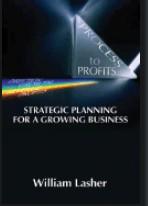Question
1a- What are the direct costs and indirect costs of financial distress, from default that leads to bankruptcy? Explain in a well-stated description and discussion,
1a- What are the direct costs and indirect costs of financial distress, from default that leads to bankruptcy? Explain in a well-stated description and discussion, not over a page in length.
1b- What are the impacts of the following on BECA Corporation's value, given the following information? SHOW ALL CALCULATIONS, and make a summary about the impact on equity owners between leveraged and unleveraged capital structures, and the impact on firm value from Financial Distress Costs.
BECA Corporation faces an uncertain future in a challenging business environment. Due to increased competition from foreign imports, its revenues have fallen dramatically in the past year. BECA's managers hope that a new product in the company's pipeline of new products will restore its fortunes. While the new product represents a significant advance over BECA's competition, whether that product will be a hit with consumers remains uncertain. If it is a hit, revenues and profits will grow, and BECA will be worth $200 million at the end of the year. If it fails, BECA will be worth only $130 million at the end of the year.
BECA Corporation may employ one of two alternative capital structures at the beginning of the year to provide the funding for this new project: (1) it can use all equity financing or (2) it can use debt that matures at the end of the year with a total of $150 million due.
Look first at the consequences of these capital structures when the new product succeeds, and when the new product fails, in a setting of perfect capital markets. Calculate what the debt and equity values will be for success and for failure, in both the unlevered and levered capital structures, at the end of the year. Show the totals to all investors (debt + equity) as well.
Now, since it has been assumed that BECA Corporation is operating in a perfect capital market, according to the M&M Proposition I, the investors (debt and equity total) will NOT be worse off because BECA may have some leverage at the beginning of the year. In other words, the value of BECA will be the same whether it has incurred the $150M of debt or not.
So, you are to show if that is indeed the case for BECA Corporation, under the following scenario.
Suppose the risk-free rate is 5%, and BECA's new product is equally likely to succeed or to fail. For simplicity, suppose that BECA's cash flows are unrelated to the state of the economy (i.e., the risk is diversifiable), so that the project has a Beta coefficient of 0 and the cost of capital is the risk-free rate. Compute the value of BECA's securities (that means both debt and equity, as applicable) at the beginning of the year with and without the $150M debt, and show whether or not the M&M Proposition I holds. That is, show if the value of the securities with or without leverage (the debt of $150M) have the same total value or not.
Now, to "get at" the value, VL or VU of the BECA Corporation, you have to discount the value of the cash flows to investors, per equation 9.23 in Chapter 9. But, what you need to know about the M&M Propositions is they assumed that the entire earnings (EBIT) in each year are paid out to the shareholders in the form of dividends or to the debtholders in the form of interest. So, regardless, the owners of the firm receive all the cash flows. So, for equation 9.23, you only have one year of FCFs, and the discount rate is 5%. What is the FCF? Since it is all of the cash flows with no taxes existing, and all of it is paid out to the equity and debt holders in a perfect capital market, what you find out is that the numerator is nothing more than the equity or debt values you calculated above. This is illustrated in Example 16.1 on page 554 of the texbook (I just provided an explanation of why the equity and debt values are used in the numerator instead of cash flows...in this case, they are the same).
2.Suppose you are a rational investor and looking at the following tax rates:
|
(The 2012 tax rates were revised in 2013 by the U.S. Congress, and signed into law by the President, but that is for information only). The tax rates shown are for financial assets held for one year or more. For assets held less than one year, capital gains are taxed at the ordinary income tax rate (currently 35% for the highest bracket); the same is true for dividends if the assets are held for less than 61 days.
Your assignment: What is the effective dividend tax rate for a buy and hold individual investor in 2006 ?
Show all of your calculations.
Step by Step Solution
There are 3 Steps involved in it
Step: 1

Get Instant Access to Expert-Tailored Solutions
See step-by-step solutions with expert insights and AI powered tools for academic success
Step: 2

Step: 3

Ace Your Homework with AI
Get the answers you need in no time with our AI-driven, step-by-step assistance
Get Started


